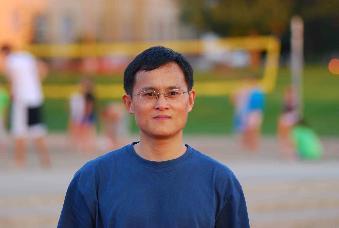
Gao Xianlong
professor Supervisor of Doctorate Candidates Supervisor of Master's Candidates
Honors and Titles : Program for New Century Excellent Talents in University
Gender : Male
Alma Mater : University of Science and Technology of China
Education Level : Graduate student graduate
Degree : Doctorate
Status : 在岗
School/Department : College of Mathematics, Physics and Information Engineering
Date of Employment : 2007-03-29
Discipline : physics
Business Address : Science Building 29#-429
Contact Information : 0579-82298507, 667810(short)
Email :
Hits :
First Author : 高先龙
Affiliation of Author(s): 数理与信息工程学院
Date of Publication : 2013-01-01
Document Type : 期刊
Journal : 浙江师范大学学报(自然科学版)
Issue : 第4期
Page Number : 372-378
ISSN : 1001-5051
Translation or Not : no
Key Words : 拓扑超流;光晶格;Majorana费米子;零能;准无序
Abstract : 通过数值求解Bogoliubov de Gennes方程,研究了具有自旋轨道耦合作用的一维费米晶格系统的性质.结果表明:在有限的自旋轨道耦合下和一定的磁场强度时,系统具有零能,此时的准粒子即为Majorana费米子.准无序效应研究表明,Majorana费米子不会被弱准无序所破坏.
Born at Anhui Province, Feixi, Ph.D., Professor,
In 1998, Anhui University Department of Applied Physics, Theoretical Physics, Bachelor, Master,
In 2001, University of Science and Technology of China, Department of Astronomy and Applied Physics, Condensed matter physics, Ph.D
Research Interests:
1. Quantum properties of low-dimensional Fermi gas: Studying the exotic quantum phases due to the fermion species, pairing, the external potential, and the interaction;
2. Density functional theory of low-dimensioanl system;
Homogeneous low-dimensional systems are strictly solvable in many cases (eg using the Bethe-Ansatz technique, Bosonization, etc.), and for the inhomogeneous systems they are more complicated and can often be solved by using density functional theory. We study the applications of the density functional theory in the model system. Related examples can be found in the application of density functional theory in the inhomogeneous Hubbard model, non-uniform Lieb-Wu model, Anderson model and Bose-Fermi mixed system. The same idea can be used to deal with disordered problems, finite temperature effects, various dynamical problems;
3. Numerical study of low-dimensional strong correlation system: By means of strict diagonalization and numerical renormalization group, we discuss the ground state, especially the correlation function of low-dimensional systems;
4. Excitation properties of low-dimensional strongly correlation systems: studying low energy excitation such as spin-charge separation phenomenon, spin-drag effect due to the relative motion of different types of fermions, and the use of variational methods and local density approximation to solve the finite temperature, low energy excitation mode.
For students:
I am currently tutoring several graduate students for scientific research. At the same time, I am organizing and supervising a number of junior undergraduates for research and develop their research interests.
See details at http://physics.zjnu.edu.cn/2016/0303/c2480a26226/page.htm
Research team http://course.zjnu.cn/qm/gao/